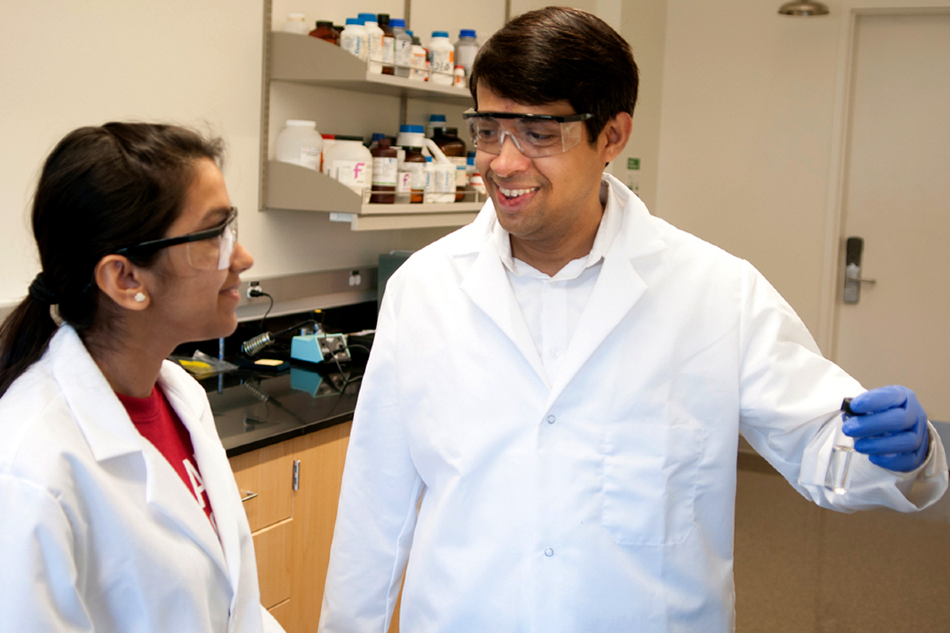Mar 16 2020
A research team from Washington State University has discovered that nanoparticles of the increasingly used plastics move along with the water supply, specifically in freshwater, or reach wastewater treatment plants, eventually ending up as landfills, sludge, and often as fertilizers.
 PhD student and first author Mehnaz Shams and Professor Chowdhury. Image Credit: Washington State University.
PhD student and first author Mehnaz Shams and Professor Chowdhury. Image Credit: Washington State University.
None of the scenarios are good.
We are drinking lots of plastics. We are drinking almost a few grams of plastics every month or so. That is concerning because you don’t know what will happen after 20 years.
Indranil Chowdhury, Study Lead and Assistant Professor, Department of Civil and Environmental Engineering, Washington State University
The team, which included graduate students Mehanz Shams and Iftaykhairul Alam, analyzed what happens to small, nanoscale plastics that reach the aquatic environment. The study results have been reported in the high-impact journal, Water Research.
It has been predicted that on a daily basis, nearly eight trillion pieces of microplastics pass through wastewater treatment plants and eventually reach the aquatic environment. Such tiny bits of plastic could be the result of the degeneration of larger plastics or from microbeads found in personal care products. According to the latest study, over 90% of tap water in the United States includes nanoscale plastics that cannot be observed by the human eye, stated Chowdury.
As part of the research, the scientists investigated the fate of nanoparticles of polystyrene and polyethylene, utilized in a large number of products, such as personal care products, kitchen appliances, plastic bags, packaging material, and disposable drinking cups. The team analyzed how the small plastic particles acted under different chemistries, spanning from water with dissolved organic material to salty seawater.
We’re looking at this more in a fundamental way. Why are they becoming stable and remaining in the water? Once they’re in different types of water, what makes these plastics remain suspended in the environment?
Indranil Chowdhury, Study Lead and Assistant Professor, Department of Civil and Environmental Engineering, Washington State University
The scientists discovered that the effect of water acidity on the fate of nanoscale plastics is very little, but salt and natural organic matter play a crucial role in the way plastics shift or settle. According to Chowdhury, it is evident that these tiny plastics remain in the environment with unidentified environmental and health consequences.
Our drinking water plants are not sufficient at removing these micro and nanoscale plastics. We’re finding these plastics in the drinking water but we don’t know why.
Indranil Chowdhury, Study Lead and Assistant Professor, Department of Civil and Environmental Engineering, Washington State University
At present, Chowdury and his colleagues are investigating the methods for eliminating the plastics from water and recently obtained a grant from the State of Washington Water Research Center for their study.
Simultaneously, Chowdury motivates people to reduce the effect of nanoscale plastics by bringing down their use of single-use plastics.
Chowdhury added, “Reuse plastics as much as possible.”